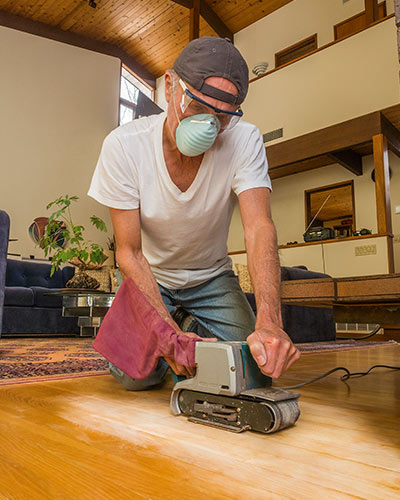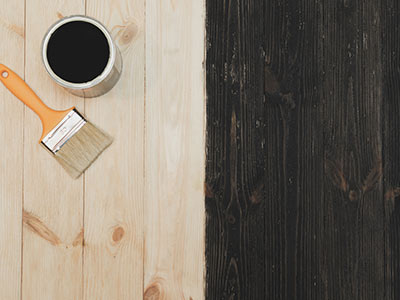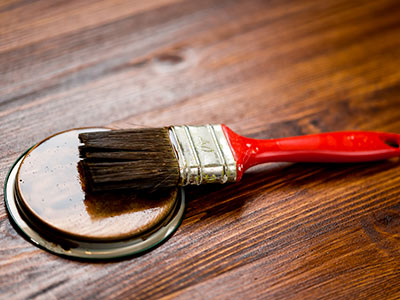Back to DIY Advice
Cost-Effective Floor Repair Techniques
 Reviving old floors has become a popular option for homeowners who want to give their homes a refreshed look without having to go through a costly remodeling process. This is because reviving old wooden floors is a cost-effective option that can make a significant difference in the overall appearance of a space. Not only is it cheaper to revive an old floor than to install a new one, but it is also a more sustainable and eco-friendly option. By preserving the existing floor, you are preventing the unnecessary waste of resources that would come with tearing up the old floor and installing a new one.
Reviving old floors has become a popular option for homeowners who want to give their homes a refreshed look without having to go through a costly remodeling process. This is because reviving old wooden floors is a cost-effective option that can make a significant difference in the overall appearance of a space. Not only is it cheaper to revive an old floor than to install a new one, but it is also a more sustainable and eco-friendly option. By preserving the existing floor, you are preventing the unnecessary waste of resources that would come with tearing up the old floor and installing a new one.
It is essential to preserve the character of old floors when reviving them. This is because old floors have a unique charm and history that cannot be replicated with new materials. These floors bring a sense of warmth and character to a space that new floors simply cannot match. By preserving the character of wooden floors, you are not only maintaining their beauty, but you are also preserving a piece of history. Reviving old floors can add value to your home, making it an excellent investment for homeowners who are considering selling their property in the future. It is a cost-effective, eco-friendly, and character-preserving option that can significantly improve the appearance and value of your home.
Assessing the Condition of Old Floors
Assessing the condition of old floors is an important task when it comes to maintaining a property. Several common issues can arise with old floors, including scratches, stains, and squeaks. Scratches can be caused by furniture or foot traffic, while stains can come from spills or pet accidents. Squeaks can happen when the floorboards become loose over time. When assessing the condition of an old floor, it is important to determine the extent of damage and the feasibility of repair.
For example, small scratches or stains may be fixable with some wood floor sanding or staining, while larger scratches or heavily damaged areas may require more extensive repairs or even replacement. Squeaky floors may require the screws to be tightened or additional nails added. It is also important to consider the type of flooring and the age of the floor when assessing its condition. Some older wooden floors may be more delicate and may require more gentle treatment when attempting repairs. Ultimately, assessing the condition of an old floor is an important step in ensuring its longevity and maintaining the overall value and appearance of a property.
DIY Floor Repair Techniques
Sanding and refinishing
 When it comes to wood floor repair, there are many DIY techniques available. One popular method for repairing hardwood floors is sanding and refinishing. This method involves removing the top layer of the hardwood floor with a drum or an orbital sander. Once the old finish is removed, the hardwood floor is then ready to be sanded. Sanding should be done slowly and carefully to ensure that the floor is even and smooth. Once the sanding is complete, it is time to apply a new finish to the hardwood floor. This can be done by applying a coat of stain or paint to the floor, followed by a sealant to protect the surface from scratches and wear. DIY floor repair techniques like sanding and refinishing can be time-consuming and require a certain level of skill, but they are cost-effective and can drastically improve the appearance of your hardwood floors.
When it comes to wood floor repair, there are many DIY techniques available. One popular method for repairing hardwood floors is sanding and refinishing. This method involves removing the top layer of the hardwood floor with a drum or an orbital sander. Once the old finish is removed, the hardwood floor is then ready to be sanded. Sanding should be done slowly and carefully to ensure that the floor is even and smooth. Once the sanding is complete, it is time to apply a new finish to the hardwood floor. This can be done by applying a coat of stain or paint to the floor, followed by a sealant to protect the surface from scratches and wear. DIY floor repair techniques like sanding and refinishing can be time-consuming and require a certain level of skill, but they are cost-effective and can drastically improve the appearance of your hardwood floors.
Filling in gaps and cracks
For those looking to fill in gaps and cracks DIY floor repair techniques can be a great way to save money on home repairs. One common issue that many homeowners face is gaps or cracks in their flooring. Luckily, there are many simple methods for filling in these gaps and cracks. One popular solution is to use wood filler. This material is easy to apply and can help to fill in any gaps or cracks in hardwood flooring. Simply apply the filler into the gap or crack, let it dry, and then sand it down to a smooth finish. Another option is to use epoxy filler, which is especially effective for filling in larger gaps and cracks. With a little bit of research and some simple tools and materials, DIY floor repair can be a straightforward and cost-effective solution for repairing your flooring issues. in their flooring, there are easy methods for achieving a seamless look. Using wood filler or putty is a great way to effectively fill in spaces and create a smooth surface.
Removing stains and blemishes
One of the most common issues that homeowners encounter with their floors is stains and blemishes. Fortunately, removing these pesky marks is a relatively simple task. For instance, for surface-level stains, you can use a mixture of water and vinegar to scrub the affected area, then rinse it with clean water. You may also use bleach to remove stubborn stains, but be cautious not to use excess bleach as this may lead to discolouration of your floors. For deep stains or scratches, you can fill them up with a wood filler or putty to restore the floor's natural appearance. In some instances, you may need to sand down the damaged surface before repairing it. You can either rent a floor sander from a hardware store or use a sanding block if you only need to fix a small area.
Fixing squeaky floors
Another common issue that many homeowners face is squeaky floors. Fortunately, you can silence these annoying noises with a few simple tricks. First, identify the source of the noise by walking around the affected area to pinpoint which boards are creaking. Then, apply a lubricant like talcum powder or WD-40 between the floorboards to reduce friction. You can also fix the problem by re-nailing loose boards or reinforcing them with adhesive to prevent movement. If the squeaking persists, you may need to insert shims to secure the subfloor to the joists or replace damaged and rotten floorboards. Remember that squeaky floors can occur due to natural wear and tear, so it's important to keep up with regular maintenance to prevent future problems. With the right tools and techniques, anyone can easily repair their floors and enjoy a quiet and comfortable home.
Budget-Friendly Floor Restoration Options
Staining wooden floors
 When it comes to restoring wooden floors, there are many budget-friendly options available that can help homeowners transform worn-out surfaces with a fresh finish. One such option is to stain the floors. This is an effective technique that can rejuvenate old floors without the need for replacement. It involves removing the existing finish and sanding the floor back to its natural state, before applying a fresh coat of stain. Staining can help homeowners achieve a wide range of looks, from dark and dramatic to light and airy.
When it comes to restoring wooden floors, there are many budget-friendly options available that can help homeowners transform worn-out surfaces with a fresh finish. One such option is to stain the floors. This is an effective technique that can rejuvenate old floors without the need for replacement. It involves removing the existing finish and sanding the floor back to its natural state, before applying a fresh coat of stain. Staining can help homeowners achieve a wide range of looks, from dark and dramatic to light and airy.
The process is relatively quick and easy and can be done by DIY enthusiasts with some basic tools and knowledge. One important thing to keep in mind when restoring wooden floors is to choose the right type of stain. Some stains can create a highly polished look, while others can create a more natural, matt finish. It’s also important to select a type of stain that is compatible with the wood species, as some woods may not take certain stains very well. For those on a tight budget, staining is an excellent way to restore wooden floors without breaking the bank. With a little time, effort, and the right materials, homeowners can give their floors a new lease of life and enjoy renewed beauty and durability for years to come.
Polishing and waxing
Another option is polishing and waxing, which is an affordable way to enhance the natural shine of the wood. This process can be completed without professional help, using simple products that can be found at your local hardware or home improvement store. The first step in this process is to get rid of any dirt or debris that has accumulated on the surface of the floor. This can be done using a soft-bristled brush or a vacuum cleaner. Afterwards, the floor can be polished using a polishing machine or a cloth. This will remove any minor scratches and will restore the shine to your wooden floor. A wax finish can be applied to enhance the natural beauty of the wood and to provide additional protection against wear and tear. With regular waxing and polishing, your wooden floors are likely to last longer and look better, while being a much more budget-friendly option as opposed to replacing them entirely. Not only does this restore the beauty of your wooden floor, but it also adds value to your property without spending too much money.
Utilising rugs and runners
Another option is to utilise rugs and runners which are effective in concealing imperfections while adding warmth and style to your floors. You can start by placing rugs in high-traffic areas like living rooms, hallways and entryways to not only protect the floors but also add an extra layer of comfort for your feet. Additionally, runners can be used to cover sections of the floor that have visible imperfections, like scratches or stains, while also creating a pleasing aesthetic feature.
Restoring Specific Flooring Types
Hardwood floors
 One of the most popular flooring types that people often restore is hardwood floors. Reviving hardwood floors involves several steps, such as sanding, staining, and sealing. Sanding is a critical step that helps remove scratches, stains, and other imperfections that may have accumulated over the years. The next step is staining, which gives the wood a new and refreshed look. A variety of stain colours are available, allowing homeowners to choose a hue that complements their decor. Lastly, sealing the floor helps protect against wear and tear and provides a smooth and durable finish. Sealing also prevents moisture from getting into the wood, which can cause unsightly gaps and warping. To ensure a successful restoration, it's best to hire a professional if you don't have experience working with wood floors. Professional services can provide a seamless restoration that will prolong the life of your hardwood floors and add value to your home.
One of the most popular flooring types that people often restore is hardwood floors. Reviving hardwood floors involves several steps, such as sanding, staining, and sealing. Sanding is a critical step that helps remove scratches, stains, and other imperfections that may have accumulated over the years. The next step is staining, which gives the wood a new and refreshed look. A variety of stain colours are available, allowing homeowners to choose a hue that complements their decor. Lastly, sealing the floor helps protect against wear and tear and provides a smooth and durable finish. Sealing also prevents moisture from getting into the wood, which can cause unsightly gaps and warping. To ensure a successful restoration, it's best to hire a professional if you don't have experience working with wood floors. Professional services can provide a seamless restoration that will prolong the life of your hardwood floors and add value to your home.
Engineered wood floors
When it comes to refurbishing engineered wood floors, there are cost-effective methods that homeowners can use to refresh the look. The most common method is sanding and refinishing the floors, which involves removing the top layer of the protective coat and then applying a fresh layer of finish. However, this method should be approached with caution as over-aggressive sanding can damage the floor's integrity and lead to costly repairs. Another cost-effective method involves using a synthetic cleaning solution that has been specifically designed for engineered wood. This method is relatively easy as it involves using a mop to apply the cleaning solution and then wiping off excess moisture. For more significant repairs, homeowners should enlist professional services to ensure that the job is done correctly. Special techniques are necessary to ensure that wooden floors are well-maintained, and homeowners should always consult professionals to ensure that they use the right techniques for the specific wooden floor type.
Antique wooden floors
When it comes to special techniques for specific wooden floor types, one important consideration is caring for antique wooden floors. These floors require special considerations due to their delicate and historic nature. One important technique is avoiding harsh cleaning chemicals that could damage the wood, and instead opting for a gentle cleaner specifically formulated for antique floors. Using soft-bristled brushes or microfiber mops can also help prevent scratches or damage to the wood. Additionally, re-coating or refinishing antique floors should be done by a professional to ensure that the original wood is preserved. In some cases, sanding may not even be recommended as it can remove the unique character and ageing of the wood. It’s important to regularly inspect antique floors for any signs of wear or damage, and address any issues promptly to prevent further damage.
Maintenance Tips to Prolong the Revived Floors
After investing in floor restoration, it's crucial to maintain the revived floors to ensure their longevity. Proper cleaning techniques must be employed to preserve the restored appearance. Avoid using harsh chemicals that could damage the floor or wipe off the finish. Instead, opt for a gentle floor cleaner that's suitable for the type of floor and follow the manufacturer's instructions. Additionally, remove any spills or messes as soon as they occur to prevent stains, which may require additional restoration.
Regular maintenance routines, such as sweeping or vacuuming the floor to remove dust and grit, can prevent wear and tear. Make sure to use a soft-bristled brush vacuum attachment to avoid scratching the floor. Use floor protectors on heavy furniture as it can reduce the risk of scratches and dents. These small preventative measures can make a significant difference in minimising future damage and extending the restored floor's life. Proper wood floor maintenance can preserve the revived floors' appearance, extend their life and save money for future repairs.